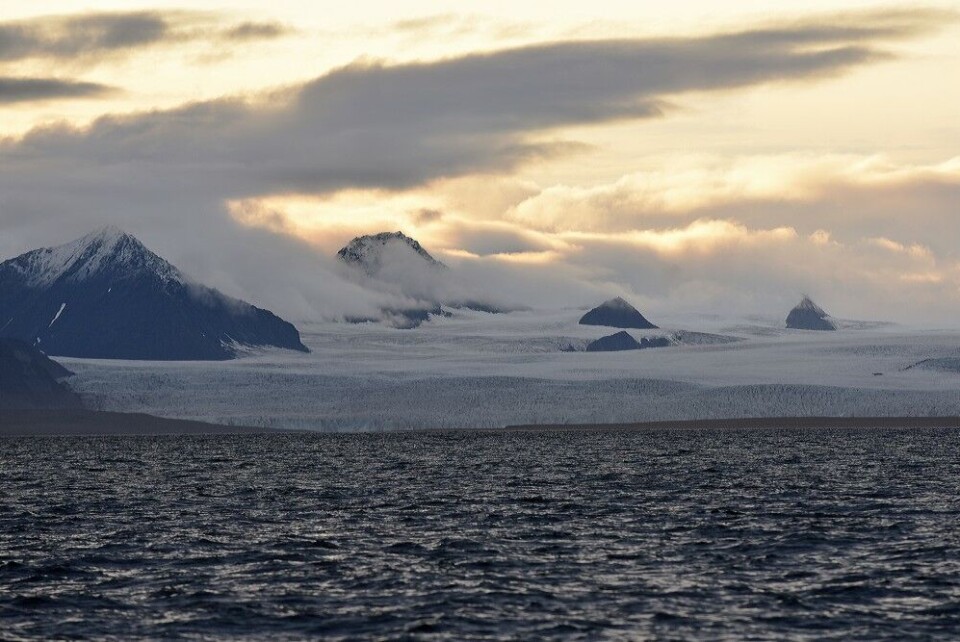
Major step towards a Europe-Asia Arctic cable link
Japanese and Nordic partners team up with Russia’s telecom giant MegaFon, sign MoU to set up trans-Arctic telecom company.
p.p1 {margin: 0.0px 0.0px 0.0px 0.0px; font: 11.0px ‘Helvetica Neue’; color: #000000; -webkit-text-stroke: #000000}p.p2 {margin: 0.0px 0.0px 0.0px 0.0px; font: 11.0px ‘Helvetica Neue’; color: #000000; -webkit-text-stroke: #000000; min-height: 12.0px}span.s1 {font-kerning: none}
A new 10,000 km trans-Arctic telecom cable from Finland via Kirkenes in Norway and the Kola Peninsula in Russia will be the shortest data cable connection between Europe and Asia.
On Thursday, a Memorandum of Understanding (MoU) was signed between Cinia and MegaFon. The Cinia alliance consists of Japanese and Nordic partners and an international investment bank.
The project has for long been lobbied by Finland, where both industry partners and governmental officials hope the country could become an international traffic node for data communication.
«The Arctic cable will contribute to the socio-economic development of the Arctic areas,» says Ari-Jussi Knaapila, CEO of Cinia. He argues such cable will give a great possibility for local and regional economies to get a boost, in addition to the global economic benefits such short-cut in data communications between Europe and Asia will bring.
«At the same time, the cable will connect three continents, covering approximately 85% of the world’s population,» Knaapila adds.
Additional to Europe and Asia, an intersection of the trans-Arctic cable is planned with an additional cable for the Bering Strait, from Chukotka to Alaska.
The project partners underlines the importance of the Arctic telecom cable, since today’s global network lacks a backbone optical cable connecting Europe, coastal regions of northern Russia, Japan and North America.
«MegaFon is proud to join a major international infrastructure project that will not only connect several continents via the Arctic, but also will benefit MegaFon as a leader of digital opportunities by enabling the development of network infrastructure for customers in the Arctic region and the Far East,» says Gevork Vermishyam, CEO of MegaFon.

Russia is by far the biggest investor in the Arctic, with major petroleum and mining projects along the Northern Sea Route. Shipping in the area is expected to increase multifold times over the years to come.
MegaFon is already operating more than 200,000 km high-speed fibre optic cable networks in Russia and neighboring countries, while Cina’s fibre optic network includes roughly 15,000 km, including the subsea cable connecting the United Kingdom with Finland via Germany.
A main objective with the MoU signed on Thursday is to establish a Development Company by the end of this year.
Since Finland has no coastline to the Arctic Ocean, the cable is proposed to go via Lapland to Kirkenes on Norway’s Barents Sea coast. Another route will be from Helsinki to central Russia and north to the Kola Peninsula’s Barents Sea coast.

In Kirkenes, locals see global opportunities in the project. «This has been our wet dream in many years. Connecting Russian, Norwegian and Finnish net and create a redundant link in Kirkenes will then make us a hub for global data-communication,» Bernt Nilsen, Director of Datakortet, the Norwegian branch of the International Computer Driving License Foundation (ECDL) previously told the Barents Observer.
«That gives us possibility to become a leading node for data centers in Europe, like we have seen in Luleå, northern Sweden.»
Bernt Nilsen pointed to cold climate, renewable energy and possibilities for locations in old mining mountain halls as other assets for pushing forward the town as an Arctic data hub.
«The only thing we lack is a high-capacity fiber cable,» he said.
















